Fan measurement chamber and claim
And since there is currently no source that offers realistic and usable data, even in comparison, we have invested a lot of time and money and simply developed our own fan measuring station with the advice of a cooling unit manufacturer and then calibrated it. Here the colleague Pascal Mouchel has done a great job and the result as the model “Sarcophagus I” can be seen in the meantime. The heavy and solid body made of thick MDF boards is screwed, glued and sound-insulated. How it all works and what we can and cannot measure in the end, you will learn in this article.
By now most of it has materialized really nicely, also with a lot of good feedback from the community and technical help from some industry partners. Of course, what we can measure from now on only meets semi-professional requirements, even though all measuring instruments have been calibrated in an elaborate and cost-intensive way. But that’s enough for all areas of what concerns the PC self-construction and -conversion. Of course, we are not a standardization company or the TÜV, but we try to measure everything as accurately as possible, which still remains within a reasonably affordable range.
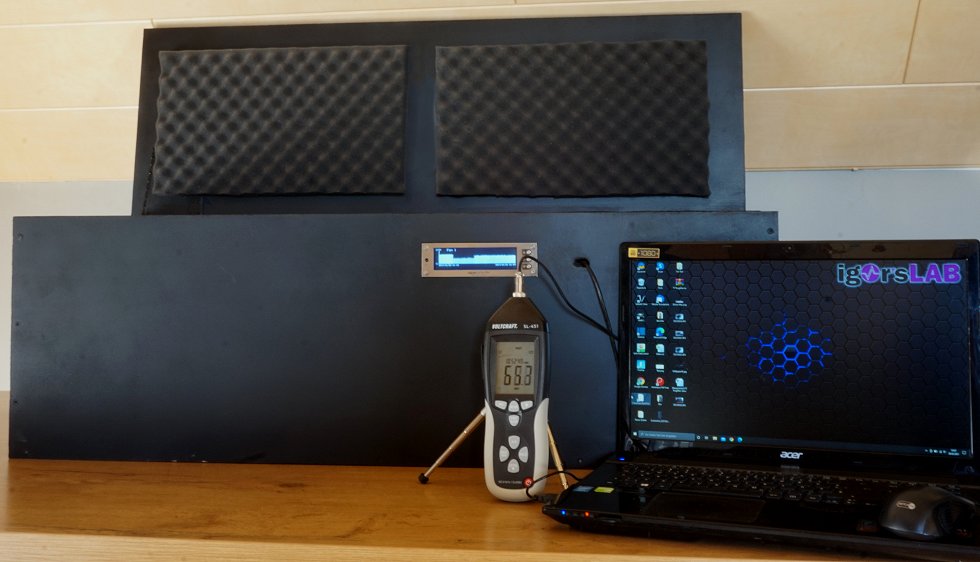
Tests as case fan and on radiators
Currently, there is always the question of what characteristics such a 120 or 140 mm fan really has. Not every model is suitable for all radiator thicknesses and many a supposed powerhouse loses so much pressure on radiators that it can hardly be called suitable. The data on volume flow (“throughput”) and static pressure in the data sheets are of no help if something works well on a slim radiator and fails completely on a 45 mm radiator.
In the picture we can see the middle partition between the two chambers, which supports the fan and also the radiator. Decoupling is of course very important, and we were fortunate to have expert help in calculating the volume for the chambers. Each of the chambers is also expediently lined with nubby foam and designed in terms of material technology so that there are hardly any disturbing influences.
The “honeycomb” behind the fan was recommended to us by Black Noise and the cooling manufacturer. This means that all coolers are equally well integrated, because each has a different exit angle and this is exactly what can be compensated for. However, due to the honeycomb, there is no tear-off edge and the airflow is directed directly to the outlet.
Radiators and fans are decoupled and screwed down with their own clamping device. On the picture you can see very nicely the improvised clamp with thick washers and insulation material as a base. The control is done by an Aquaero from Aqua Computer, which we bought, so we can control and test the fans by voltage (DC) or by PWM. Both are needed, because many fans, some people don’t know, can’t be brought to the lower and upper limits of the speed range with pure voltage regulation and also show other anomalies, about which we will write something at the appropriate place.
Volume flow
We measure the volume flow at the outlet of the second chamber where the air is blown out. This range is covered relatively accurately by comparative measurement in the measurement setup of the refrigeration partner, so that our testo 410i now delivers quite reliable results to the electronic measurement data acquisition system, which correspond quite well with the reference data of the professional measurement. What is important here is not the price of the equipment, but the appropriate positioning and the exact calibration with series of comparative measurements.
Static pressure
The measurement of the static pressure is carried out as usual as a differential pressure measurement. For this purpose, the special “bowl” is clamped on so that it closes airtight. Here too, of course, measurements were taken with borrowed, professional equipment and time-consuming calibrations were carried out. For this measurement we also use the 510i, a device we purchased ourselves from testo, and also collect the data wirelessly.
Noise emission
Measuring the noise level is a bit tricky, but works quite well in the evening hours at the measurement location. We decided to use dBA or dBC because values below one sone can hardly be measured reliably with still affordable and calibrated equipment and the software conversions of various software programs tend to confuse and become inaccurate in this low range. I’d rather use dBA then, especially since most people can do something with it. The measuring distance is 50 cm from the centre axis of the fan inlet.
We take two approaches to these measurements. For quick and plausibility tests we use a Voltcraft SL 451, which we calibrated according to ISO and whose microphone we placed decoupled from the body. The data acquisition takes place outside the measuring chamber. The Voltcraft SL 451 was kindly and uncomplicatedly provided to us by Conrad Elektronik. It is also the only component not acquired by ourselves. All other measuring instruments including accessories and electronics were purchased by us or provided from private stocks.
Our own purchases include a calibrated measurement microphone with XLR connector and low-noise USB interface. Measurements are taken in the evening and night hours in rural areas, so that one can already be quite satisfied with a basic level of below 26 dB(A). Since everything will be above this anyway during the measurement setup with a distance of 50 cm, this should not be a problem.
We also took the feedback from the community and evaluated the frequency band for each measurement, so you not only get the SPL values (sound pressure) in dB(A), but also a nice frequency analysis that helps to describe the sound character perfectly. Bearing or motor noise, vibrations or the tearing noise on the rotor – everything becomes mercilessly visible.
We will not go into certain details and approaches in this article, because there is still some foreign know-how in this structure and some things would probably be too far for the normal consumer. If you are interested and would like to build something like this, you are of course welcome to contact us. This also applies to all those who would like to contribute suggestions and tips, because we are still at the very beginning and can still correct or expand.
What we measure and how the result looks like, you can see on the next page by means of an exemplary selected fan, which however is anything but our reference. That’s exactly what we are still looking for 🙂
| Test setup | |
| Housing / measuring chamber | Two-chamber measuring set-up with sound insulation, fully air-conditioned room |
| Volume flow and flow velocity | testo 410i (calibrated) |
| Differential pressure measurement | testo 510i (calibrated) |
| Sound level measurement | Classe 2 measurement microphone (Beyerdynamic) and XLR USB interface, Smaart 7, Voltcraft SL 451 (Conrad, permanent rental, calibrated) |
| Speed control and fan control | Aqua Computer Aquaero 6 Pro |
| Commissioning | March / April 2021 |
- 1 - Introduction and Speed Test
- 2 - Test Chamber, Methods and Equipment
- 3 - Alphacool Eiszyklon Aurora LUX Pro ARGB 140
- 4 - Arctic P14 PWM
- 5 - Blacknoise NB B14x-P-BL PWM ARGB
- 6 - Cooler Master Sickleflow 140 ARGB
- 7 - Corsair LL140 RGB
- 8 - Noctua NF-A14 FLX
- 9 - Start-up and shut-down Voltage and RPM
- 10 - Case Fan: Performance
- 11 - Case Fan: Sound Pressure Level and Audio-Samples
- 12 - 25 mm Radiator: Performance
- 13 - 25 mm Radiator: Sound Pressure Level
- 14 - 45 mm Radiator: Performance
- 15 - 45 mm Radiator: Sound Pressure Level
- 16 - 60 mm Radiator: Performance
- 17 - 60 mm Radiator: Sound Pressure Level
- 18 - Summary and Conclusion
















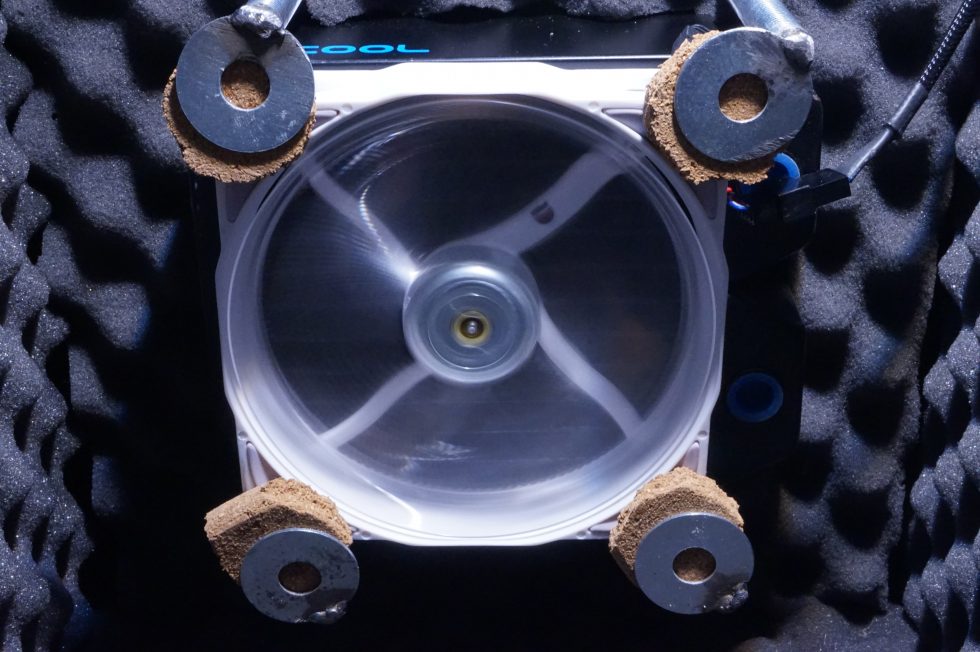
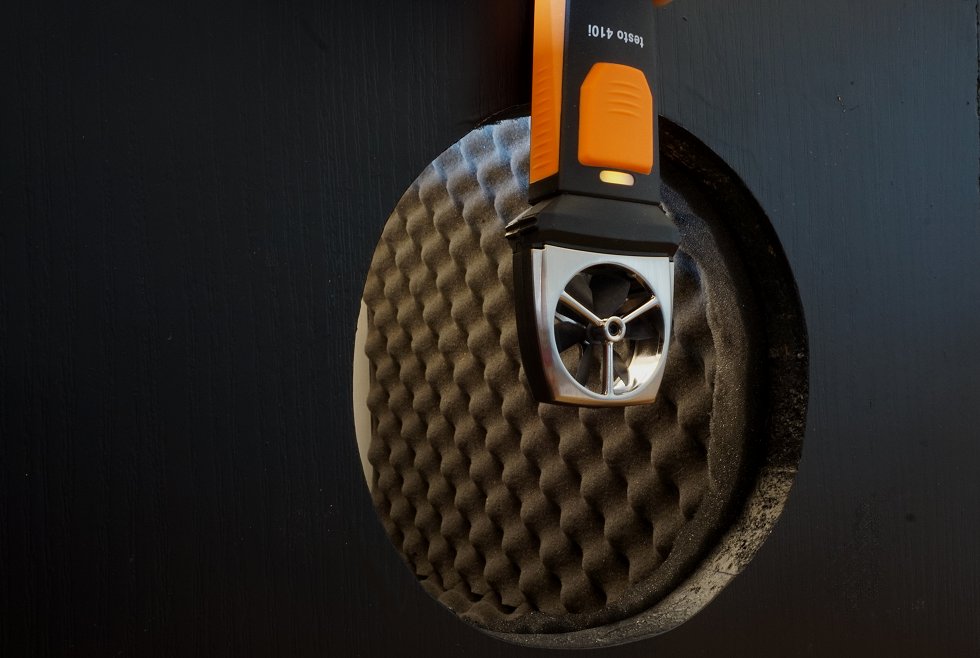
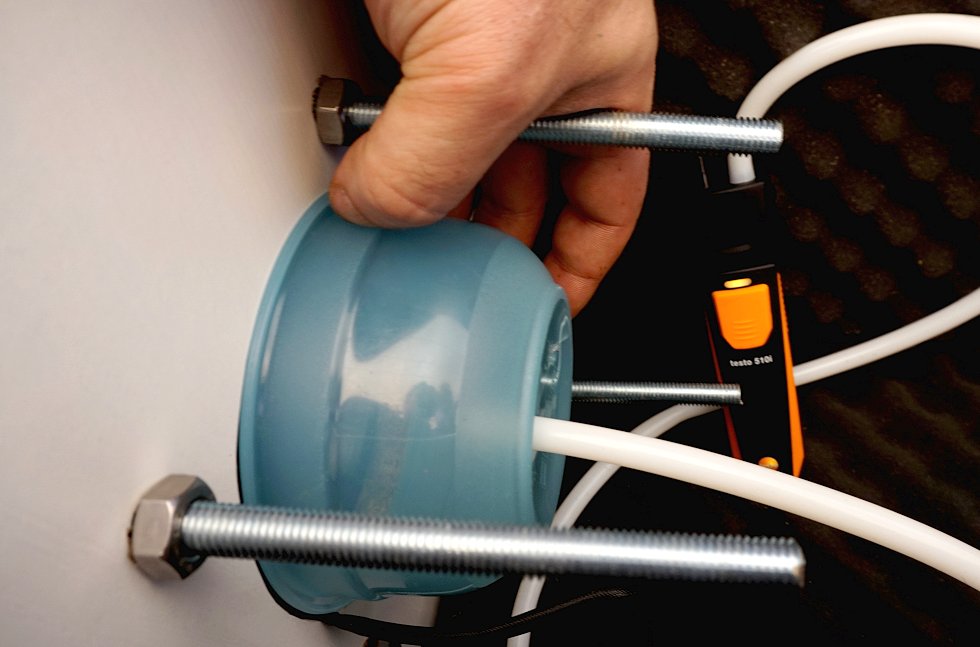

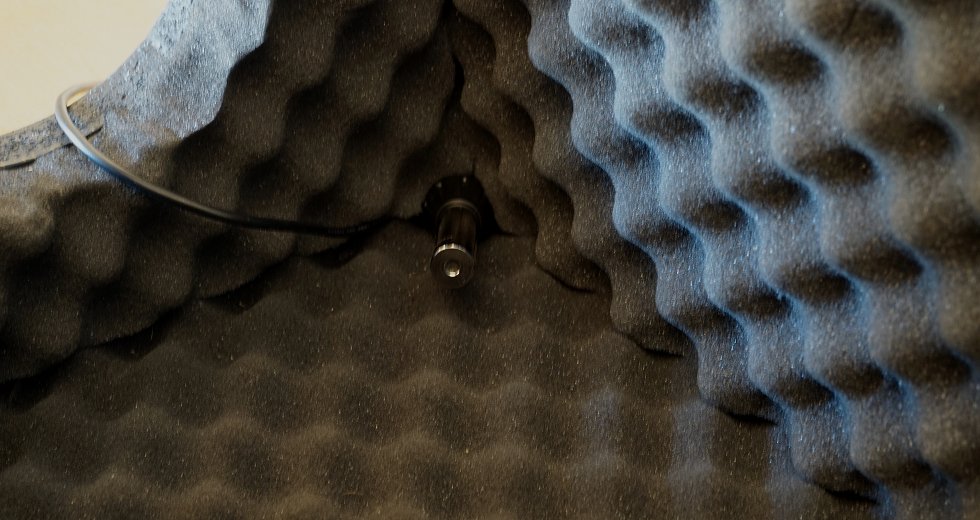
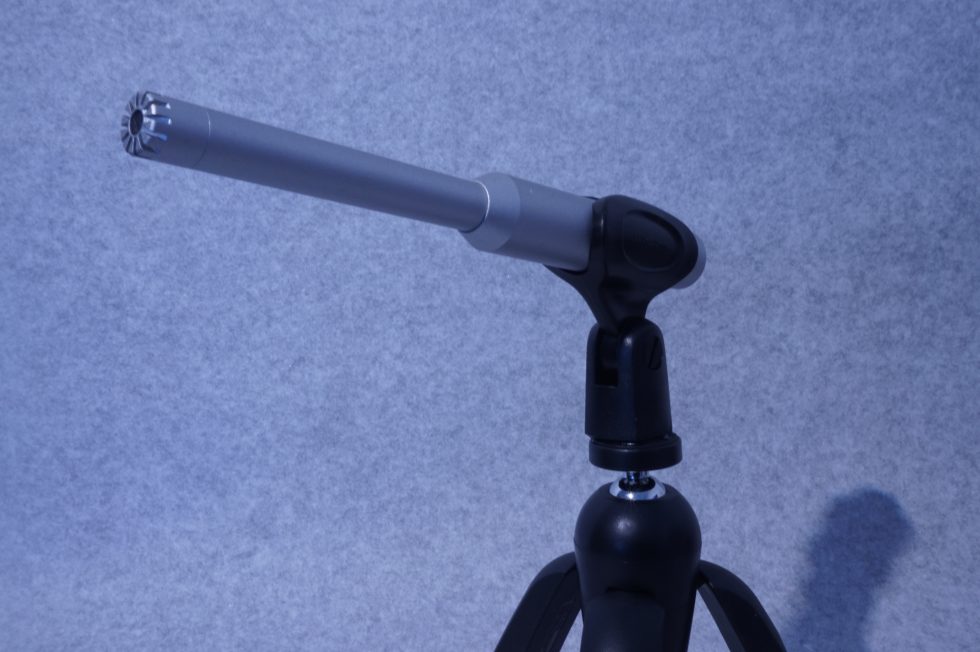
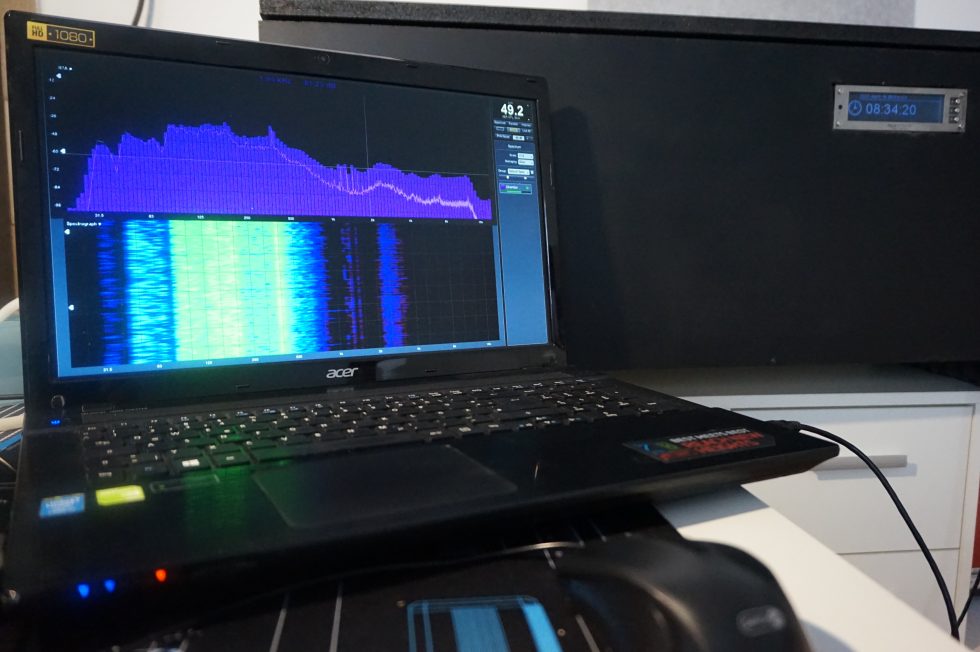



















126 Antworten
Kommentar
Lade neue Kommentare
Veteran
Urgestein
Urgestein
Urgestein
Urgestein
Urgestein
1
Mitglied
Urgestein
Urgestein
Urgestein
Veteran
Urgestein
Urgestein
Veteran
Urgestein
Veteran
Veteran
Urgestein
Alle Kommentare lesen unter igor´sLAB Community →